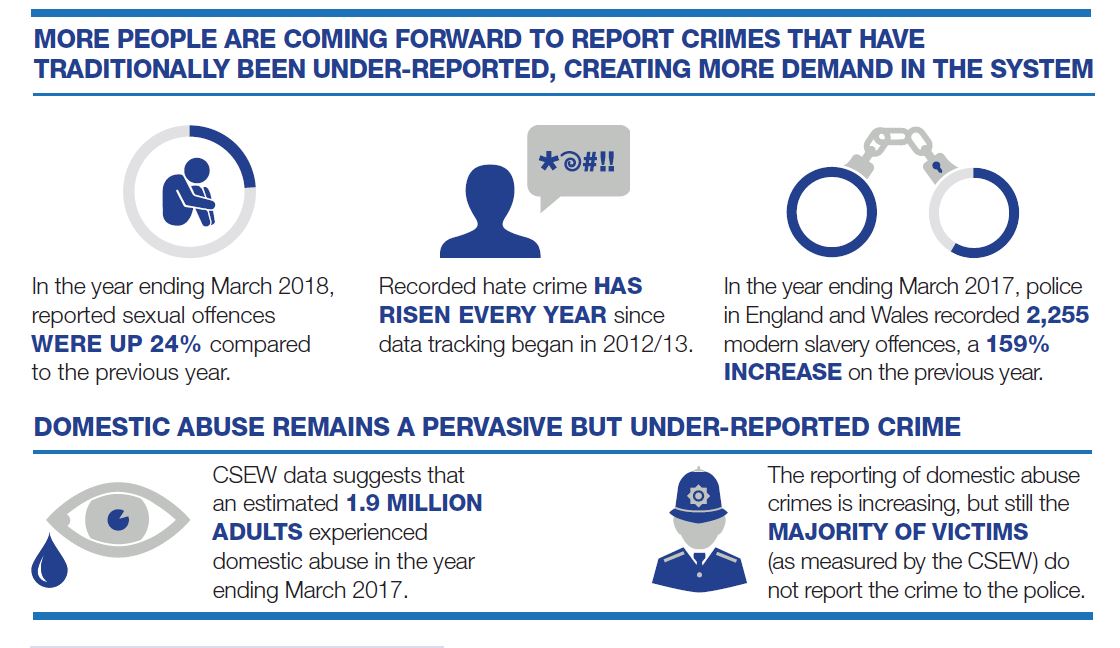A victim's journey
On Monday (10 September 2018), Justice Secretary David Gauke launched the long-awaited victims strategy.
The strategy represents the next stage in a cross-party consensus that victims have been neglected in the justice system for too long (see the timeline below).
With a foreword from the Prime Minister, the strategy aims to be the first cross-government approach to supporting victims throughout their journey through the justice system.
The strategy highlights the ways in which crime is evolving:
Technology has become an enabler for criminality, leading to new crimes such as upskirting, and a rise in other offences such as stalking. Fraud and cyber offences now account for nearly half of all crime in England and Wales. More victims are coming forward to report crimes that have traditionally been under-reported and seek support. For example, demand for support services from male victims of sexual violence has risen 176% in three years.
It says that the support we offer victims must keep pace with these changes.
I list the key aspects of the strategy below the timeline but some of the other points which caught my eye are:
- A pledge to increase spending for survivors of sexual violence from £31m to £39m per year.
- Spend £8 million on interventions to ensure support is available to children who witness domestic abuse.
- Pilot the ‘Child House’ model in London, whereby multiple services are brought together in a child-friendly environment to minimise additional trauma.
- Trial the use of police body worn cameras to take victim statements.
- Increase the number of registered intermediaries (see here for a role description).
- Increase the use of digital contact to communicate with victims.
- Increase “the opportunities for victims to engage in alternative solutions to court” – in other words, make restorative justice more widely available.
- Review and consider extending the Unduly Lenient Sentence scheme so victims and the public can have sentences reconsidered by the Court of Appeal.
- Improve Victim Liaison Officer training, especially in supporting victims during parole hearings and in making a Victim Personal Statement.
Key aspects of the strategy
The strategy sets out how the government will:
- Consult on a revised Victims’ Code to ensure entitlements better reflect the needs of victims and the changing nature of crime. One aim is to reduce the points of contact for victims through reviewing the roles and responsibilities of agencies that support victims, and review support for victims of mentally disordered offenders.
- Consult on a Victims’ Law to underpin the code, which will include strengthening the Victims’ Commissioner’s powers. The consultation will be launched in early 2019, with the aim of an amended code being in place in 2019.
- Consult on the establishment of an Independent Public Advocate (IPA) to help bereaved families following a disaster. They will help guide families throughout an investigative process, ensuring their voices are heard at inquests, and that they are directed to appropriate support services.
- Review the entire Criminal Injuries Compensation Scheme (CICS) so it reflects the changing nature of crime – particularly around applications relating to child sexual abuse and terrorism. Consideration will be given to reform of the eligibility criteria, and the government is committed to abolishing the unfair and arbitrary pre-1979 ‘same roof rule.’
- Improve communication and support for victims during the parole process. A commitment to simplify the Victim Contact Scheme and improve the quality of communication; allow Victim Personal Statements at parole hearings; and roll out revised training for Victim Liaison Officers.
Conclusion
Successive governments have acknowledged the way in which victims have been treated for too long as peripheral bystanders to the justice system rather than the injured party who is/are the central cause of proceedings.
The strategy puts forward a comprehensive package of measures to rectify this although much of the detail will be decided by a series of consultations next year.
The strategy also marks a key tipping point when the rights of victims and of offenders are likely to be in more frequent conflict with such issues such as appeals over unduly lenient sentences and greater rights at parole hearings.









